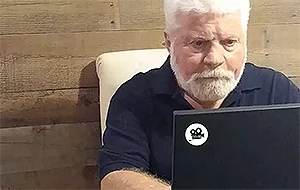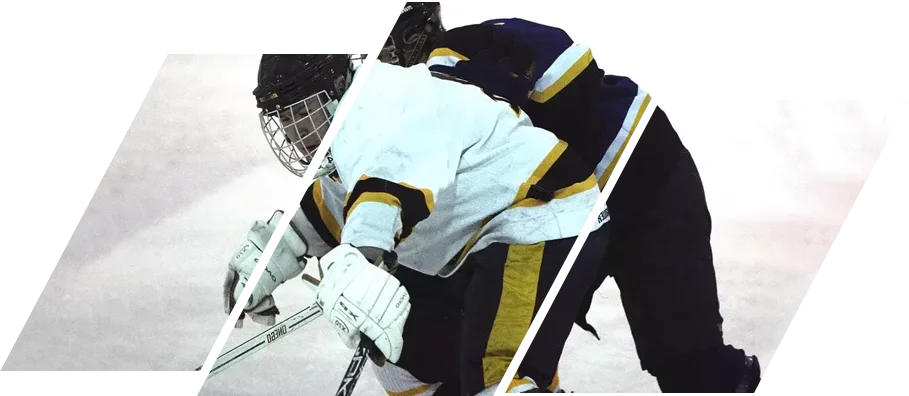Using Video To Study Hockey
Introduction
I’d like to think that I was at the forefront in using video in hockey coaching, beginning way back in 1979-80. Now, retired from team coaching for a few years, I only wish I’d had the chance to apply the benefits of a program like iSportsAnalysis with my past high school and college teams. As for using video myself, I suspect coaches in many other sports might find the following at least amusing, if not insightful.
~ Dennis Chighisola
Using Video To Study Hockey
As I finished typing the above title, it struck me how much of my hockey coaching — and problem solving — has relied on the use of video.
This brief aside… My first paid coaching gig was at a rink that owned one of the first video recorders and players ever made.
And, while this may sound funny today to folks who don’t recall such, I’d never before been able to do what I could do with that machine, like sitting and playing (and playing and playing) a certain segment of a game or a practice, to study every moment, or to exam every tiny movement.
Not long after that experience, I attended a Canadian coaching seminar where the late Roger Neilson put on a demonstration about coaching with video. And, that was it for me (in the late-70s), when I decided I was going to get my own video gear.
Getting back to the problem solving here… I don’t think I’ll ever offer hockey advice that won’t have an extensive video study at its foundation.
Worse yet, I guess, is the fact that I’ve studied most aspects of the game to the point where I’ve become a rather tenacious debater in some social media forums.
Yes, I know what I know…
I’ve seen it with my own eyes countless times, and I’m not basing my opinions on wives’ tales or hearsay.
As yet another aside… Sometime down the road, I’m going to once again let the public know about a gadget that is guaranteed to smooth and make more powerful and more energy efficient anyone’s forward skating stride. For now, though, let me tell you about a young lady who long ago came to me with some serious skating problems.
I’ll save the details of my study for another time, but right now I’ll just say that I studied her on video until my eyes blurred.
Finally, late one night, the root of her problem hit me. And, once the problem was obvious, the solution was fairly easy for me.
Over following days I experimented with a few things, until I arrived at a gadget that cured her in a jiffy.
That gadget subsequently helped hundreds (maybe even thousands) of my students over ensuing years, and I later sold it around the world.
Okay, now for something I hope coaches will find at least as interesting… For, like my skating invention, this study helps to highlight some of the other things I could do with video:
- First off, let me suggest that I’ve seldom been interested in studying games that we’ve won easily. This is quite different from when I’d want to study a star player, and perhaps discover the unique ways he or she does things. No, as a team coach, I’ve always felt that my job was to know the difficulties my players were having, and help them from there. So, it should make sense that lopsided wins hardly show a team’s shortcomings.
- The game in question happened to be a rather painful loss, against a team I thought we should be neck-and-neck with in our league standings. Not so this night, however, and I worried that we might not do any better in a rematch, IF I didn’t fix some things quickly.
- Which things needed fixing? Hmmmmm… I decided to let the video show me. And, perhaps, the best thing I decided ahead of time was to NOT turn my machine on with any preconceived notions, with one exception: I did hope to discover why we turned-over the puck so many times, and why those turn-overs so often ended up in our net.
- We were down, 1-0, fairly early, when an opposing center took a neutral-ice draw straight from the puck-drop to our net. That, I noted on paper, could be fixed easily.
- Remember, that I was mainly looking for and studying turn-overs, so my notes probably filled about a dozen pages. So, I’d find a loss of the puck, jot the time from my video player, and then run and rerun that few seconds of play as often as it took to judge what really happened.
- It wasn’t until a few hours later — and several cups of coffee — that I started to sense some consistency in my findings. Sure, my guys made many mistakes over the course of that 45-minute game (this was Massachusetts high school hockey, and we only played 3 12-minute or 3 15-minute periods at the time). But it was our passing and receiving game that showed within far too many of my notes.
Improve your team's performance
Get insights, get winning
Sign up now and get started
Okay, another aside, this one having to do with passing and receiving…
For a very long time, I’ve blamed North American youth coaches for wrongly viewing that aspect of our game.
Yes, that’s a part of hockey’s strategies. And this is evidenced as we enter any local rink to hear coaches and parents screaming for their kids to pass the puck.
Consider, however, that most of the best skilled players we watch on TV are also among the best passers, and they also manage to corral bad passes more often than their lesser teammates. Why? It’s because passing and receiving are both skills that are very closely linked to skating and puckhandling abilities.
And, moving through smart routes or being in high percentage receiving positions contributes to the success of a pass play.
As it turned out, I found close to 300 errors on either end of our passes that night. And I can tell you the most common…
On the passing side, it usually involved one of my guys carelessly tossing a puck in the general direction of a mate — often over the teammate’s stick, or sending it bouncing or rolling toward him.
On the receiving side, it wasn’t so much that a potential receiver muffed a pass, but he was more often nowhere to be found, or not doing anything to help a puckhandling teammate who was in trouble.
All that said about our passing game, and for all I did to later correct those things, there was something at least as impactful I came away with after that study.
Yes, as I mentioned going into it, my one concern was about turn-overs. But, without diminishing the significance of what caused those turn-overs, shouldn’t I be equally concerned about the way we reacted right after each give-away? Ha. You bet.
And, what I discovered was that my guys were usually slower in reacting than were our opponents. Ah, yes, that thing about our ability to make quicker transitions on turnovers…
That part of my study – plus a lot of trial and error and even more video studies — eventually resulted in a unique “drill format” that met with raves when I presented it to the NHL Coaching Symposium in Montreal, Quebec back in 1980.
It was even described by one former Stanley Cup winning coach as “the best drill ever”.
Yes, I owe so many of my training inventions and drill ideas to a personal willingness to study the game intensely.
As importantly, I’ve found studying the game deeply has helped me resolve inner wrestles having to do with various technical or tactical options.

Dennis Chighisola
Contributor
Dennis Chighisola is best known around the hockey world as “Coach Chic”.
Over 45+ years he has coached every level of amateur hockey from Mites to college, and his clinics and hockey schools helped beginners to pros, including numerous future NHL players.
Today, retired from the ice, he mainly helps current day coaches, parents and adult players in his online advice site,
Coach Chic’s Hockey Mastermind Group (https://www.patreon.com/coachchic)

